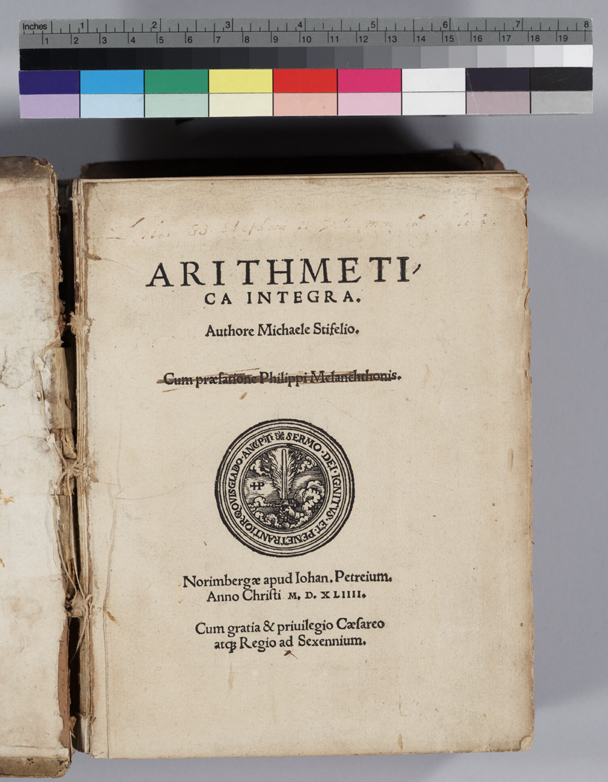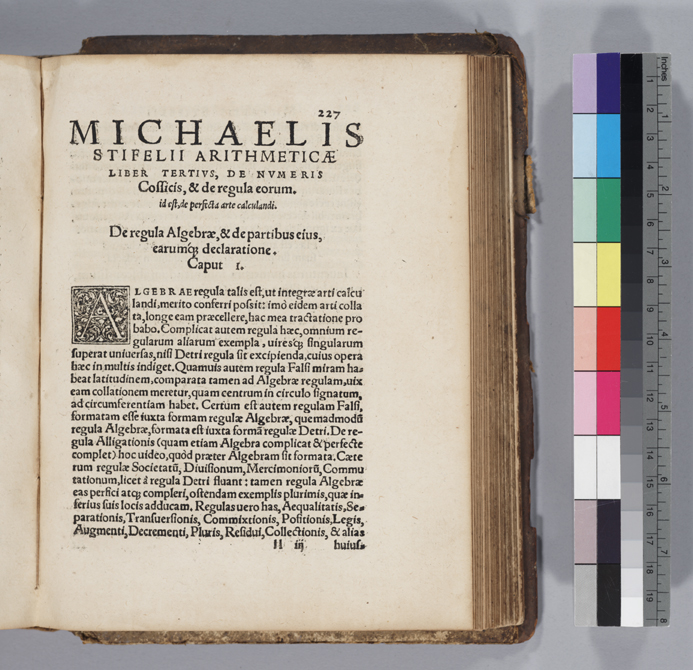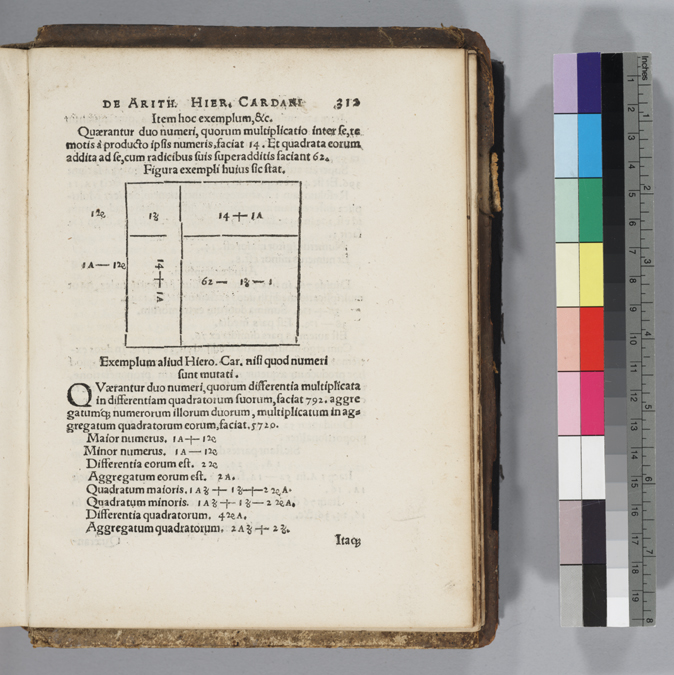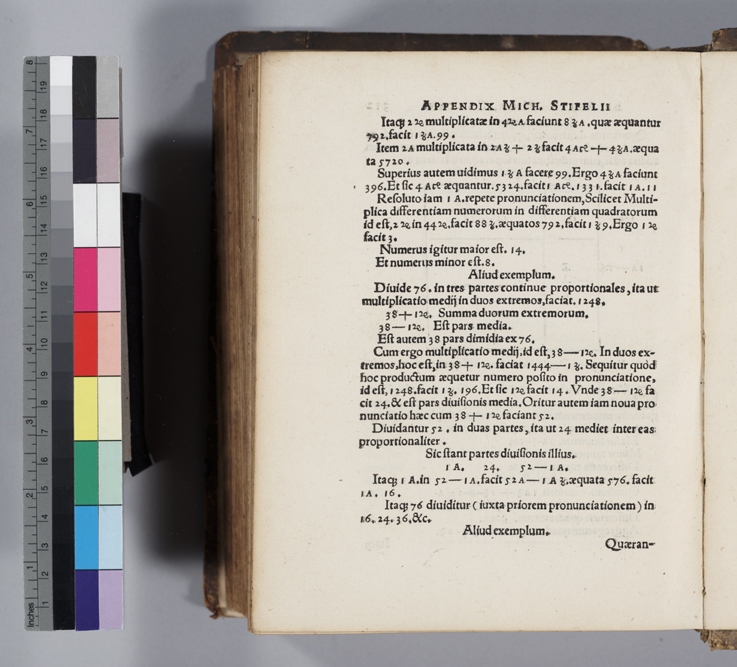- About MAA
- Membership
- MAA Publications
- Periodicals
- Blogs
- MAA Book Series
- MAA Press (an imprint of the AMS)
- MAA Notes
- MAA Reviews
- Mathematical Communication
- Information for Libraries
- Author Resources
- Advertise with MAA
- Meetings
- Competitions
- Programs
- Communities
- MAA Sections
- SIGMAA
- MAA Connect
- Students
- MAA Awards
- Awards Booklets
- Writing Awards
- Teaching Awards
- Service Awards
- Research Awards
- Lecture Awards
- Putnam Competition Individual and Team Winners
- D. E. Shaw Group AMC 8 Awards & Certificates
- Maryam Mirzakhani AMC 10 A Awards & Certificates
- Two Sigma AMC 10 B Awards & Certificates
- Jane Street AMC 12 A Awards & Certificates
- Akamai AMC 12 B Awards & Certificates
- High School Teachers
- News
You are here
Mathematical Treasures - Michael Stifel's Arithmetica Integra

This is the title page of the Arithmetica Integra (1544), by Michael Stifel (1487-1567), one of the best-known German cossists of the sixteenth century. Stifel's work covered the basics of algebra, using the German symbols for powers of the unknown and also considering negative exponents for one of the first times in a European book. He also presented the Pascal triangle as a tool for finding roots of numbers and was one of the first to present one combined form of the algorithm for solving quadratic equations.

Page 227 gives Stifel's introduction to the rules of algebra.

The diagram here on p. 255 represents the solution to the pair of simultaneous equations
x2 + y2 - (x + y) = 78, xy + (x + y) = 39.
Here, the two unknowns are represented by AC and BC, while the sum AB is called "B" by Stifel. Also, the script z is Stifel's notation for the square of the (first) unknown, namely x2. Note that therefore the smaller square (on the upper right) is labeled with the script z, the two rectangles are labeled 39 - 1B (since their areas are each xy, which is equal to 30 - (x + y)), and the larger square, which is equal to y2, is labeled 78 + B - z, that is 78 + (x + y) - x2. Stifel completes the problem as follows: The sum of the areas of all four regions of the diagram is equal to 156 - B, and this equals B2. It follows that B = 12. Therefore the larger square has area 90 - x2, and the two rectangles each have area 27. But either of those rectangles is the mean proportional between the larger square and the smaller square. Therefore, (90 - x2):27 = 27:x2. It follows that 90x2 - x4 = 729. So x2 = 9 and x = 3. Then y = 9 and the problem is solved.

On page 312 (front and back), Stifel discusses the following problem, which he has taken from a work of Cardano:
Find two numbers such that their difference multiplied by the difference of their squares is 792, while their sum multiplied by the sum of their squares is 5720.
We can follow how Stifel makes use of two unknowns in this problem.

Here is the reverse of page 312.
Frank J. Swetz and Victor J. Katz, "Mathematical Treasures - Michael Stifel's Arithmetica Integra," Convergence (January 2011)




